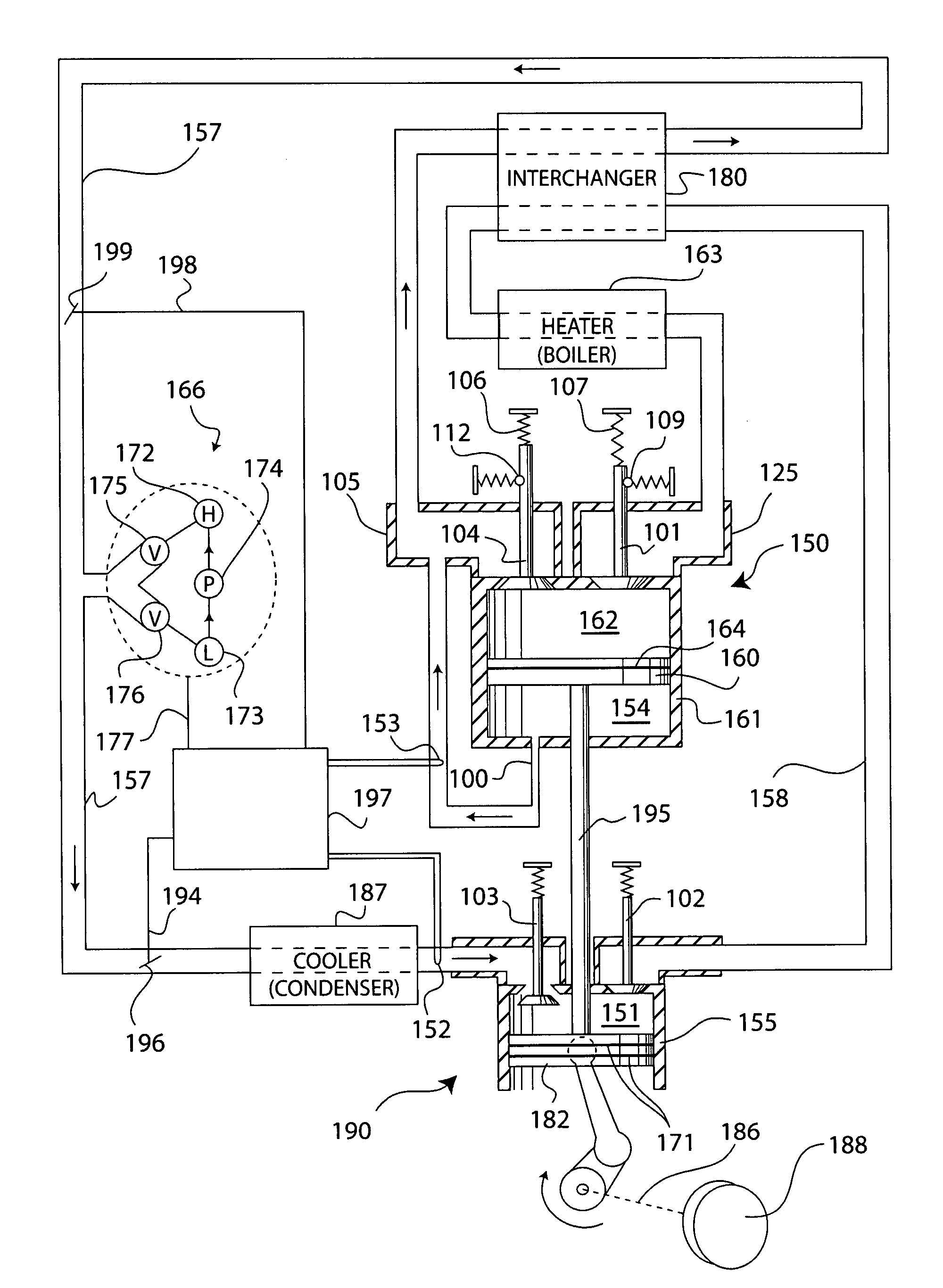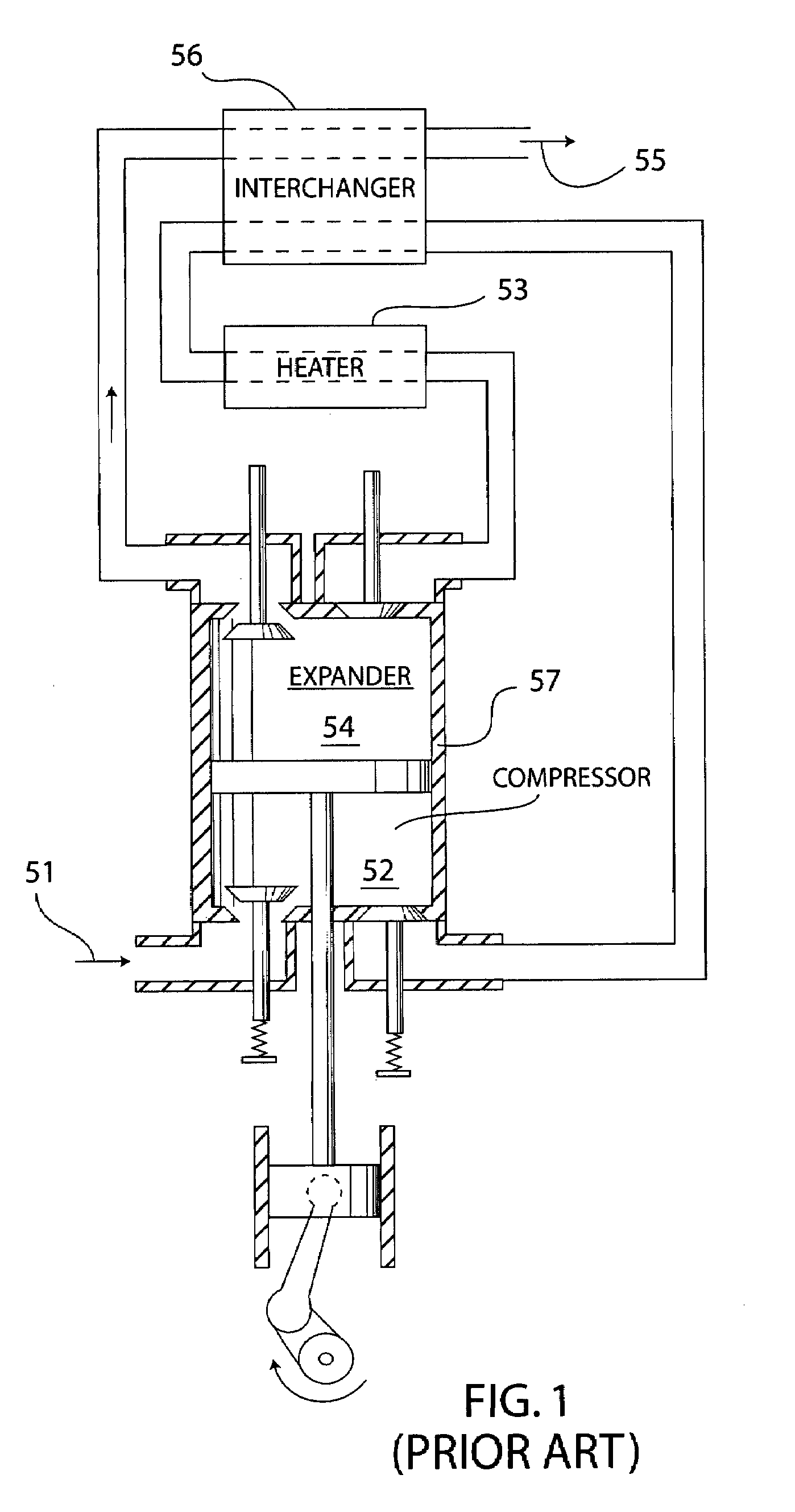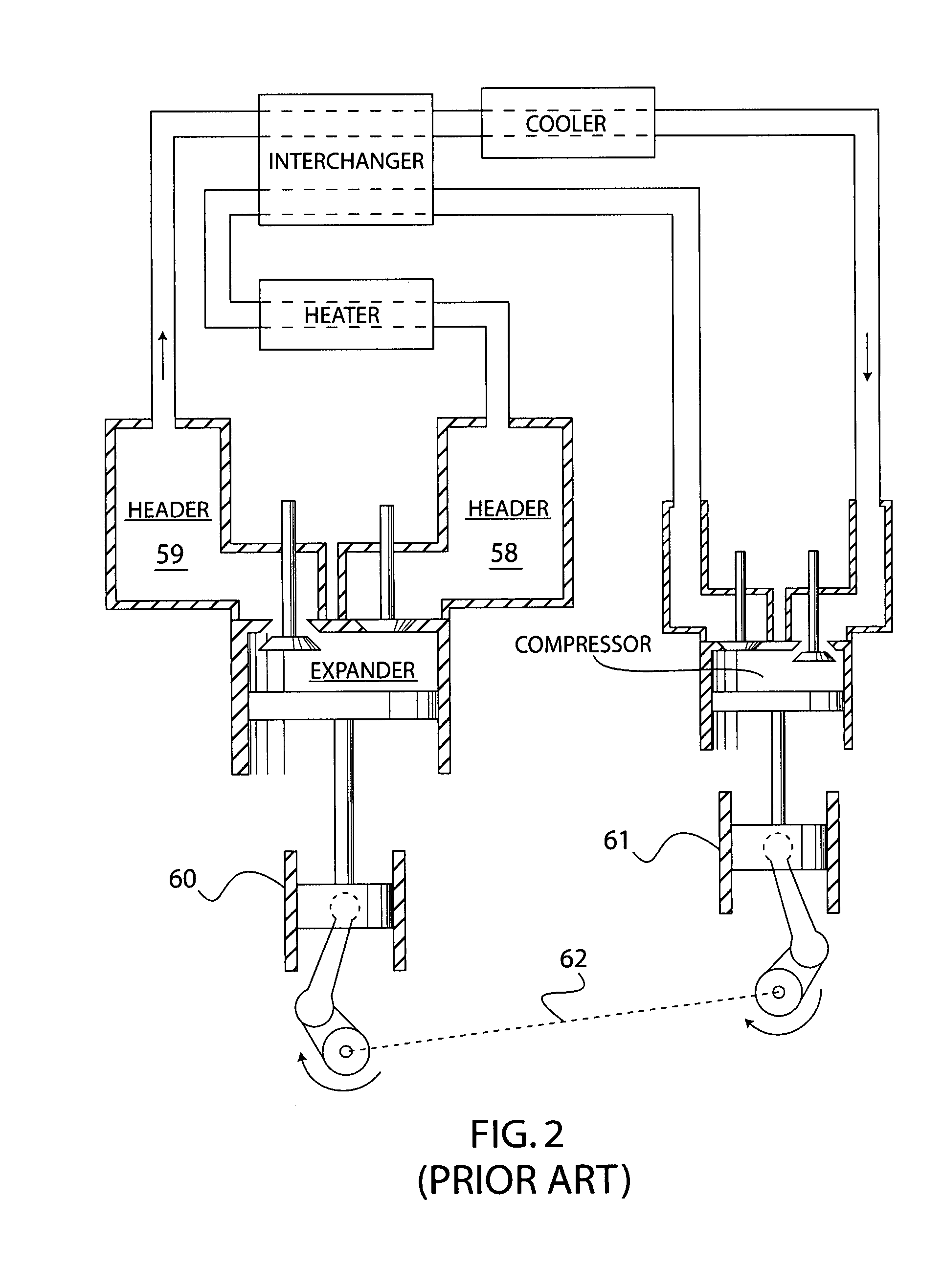Harmonic engine
a technology of engine and heat, applied in the direction of steam engine plants, machines/engines, mechanical equipment, etc., can solve the problems of affecting the thermal efficiency of the engine, causing a significant loss of thermal efficiency, and causing a greater frictional power loss in the system than is necessary
- Summary
- Abstract
- Description
- Claims
- Application Information
AI Technical Summary
Benefits of technology
Problems solved by technology
Method used
Image
Examples
Embodiment Construction
[0033]Generally, the present invention is a high efficiency, heat powered reciprocating-piston engine designed to maximize thermal efficiency by minimizing thermal losses and pressure hysteresis losses as much as reasonably achievable, as well as enabling automatic self-acting expander valve actuation for simplified and cost-effective operation. The engine expander and compressor cylinders of the engine are separated in order to minimize the heat loss from the hot end to the cold end of the engine. In particular, the separation enables the harmonic engine to operate at very high thermal efficiency by allowing a high ratio between the hot side temperature and the cold side temperature in the engine. By virtue of the extreme temperature capability of this engine, thermal efficiency substantially exceeding 60%, the current state of the art value attained with gas turbine plus steam turbine combined cycle engines, is enabled. Experiments with a laboratory prototype based on the engine d...
PUM
 Login to View More
Login to View More Abstract
Description
Claims
Application Information
 Login to View More
Login to View More - R&D
- Intellectual Property
- Life Sciences
- Materials
- Tech Scout
- Unparalleled Data Quality
- Higher Quality Content
- 60% Fewer Hallucinations
Browse by: Latest US Patents, China's latest patents, Technical Efficacy Thesaurus, Application Domain, Technology Topic, Popular Technical Reports.
© 2025 PatSnap. All rights reserved.Legal|Privacy policy|Modern Slavery Act Transparency Statement|Sitemap|About US| Contact US: help@patsnap.com



